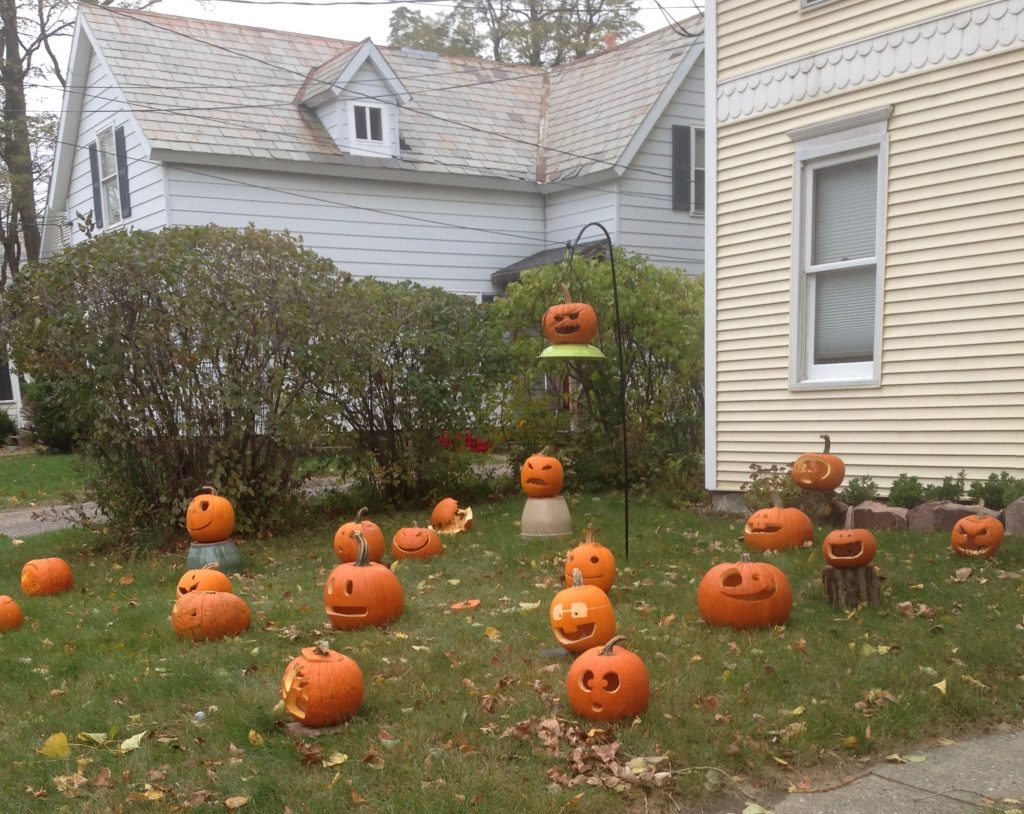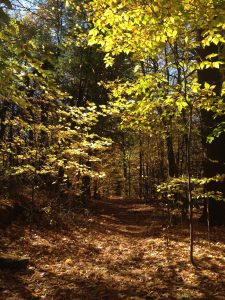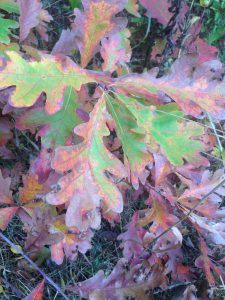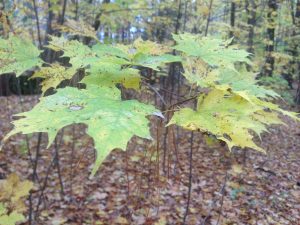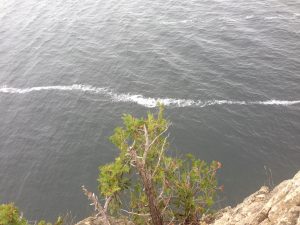It is Halloween on Lone Rock Point! On my walk down the signs of this holiday were everywhere. The bus I took downtown was all decked out with back ravens and spooky noises and front lawns were littered with carved pumpkins.
Down on the point, the signs of the holiday were much less evident and it was just any other chilly fall day. Given as only a week had passed since I was here last, I expected to have trouble observing many changes. Change however was much more evident than expected. When I first entered the forest, I thought the leaf colors had changed tremendously. I remembered being welcomed by a bright orange color the week before but what I was looking at now seemed much more brown and faded.
The lack of vibrancy of the colors may have merely been a result of the cloudy day after a weekend of incessant rain. What I realized on the walk back however was that the tree composition was layered. The layers of forest are clearly mapped out in the diagram below from Burlington Geographic. My hike in involves entering the point from the beach (tip of the purple section on the south end of the map) and walking though the turquoise section labeled as White Pine – Transition Northern Hardwood Forest. Next I walk on the edge of the yellow Old Field section emerging into the dark blue Mesic Oak – Hickory – Northern Hardwood Forest. The final destination is the light purple Lake Bluff Cedar – Pine Forest. My observations of the phenological changes of these layers are below.
When you first enter the trail from Lone Rock Point, the dominant tree species are oaks. At this point the oaks were beginning to turn brownish red colors.
Further in, the yellow colors of Norway maples were the most prominent and the eastern white pines were losing some needles, caught in the branches of the other trees. The sugar maples in this area were past peak, littering the ground.
There is a very drastic shift in the composition towards the edge of the point as conifers become dominant, particularly northern white cedars. This area looks mostly the same week to week, staying green through the winter. The northern white cedars had shed some of their old needles the week earlier and were now mostly green.
Perhaps the most obvious change was in the water. There was a white strip of foam in the lake that stretched about 100 yards. This may be the product of pollution but it is odd that the foam is all concentrated in a strip.
When I arrived at my spot, I was feeling very impatient and was frustrated when I saw no wildlife. After sitting and observing for a while however I heard a lone goose honking over the lake and spotted a bluejay and a bunch of chickadees were flying around in the canopy of the taller eastern white pines. Several mallard ducks were paddling around in the lake and a squirrel scurried around in the underbrush. Like the week before, there was a flock of gulls hanging around North Beach on my walk back. It is amazing how signs of wildlife appear when they are least expected and not sought out.
(Original Photographs Copyright Colby Bosley-Smith, 2016)
